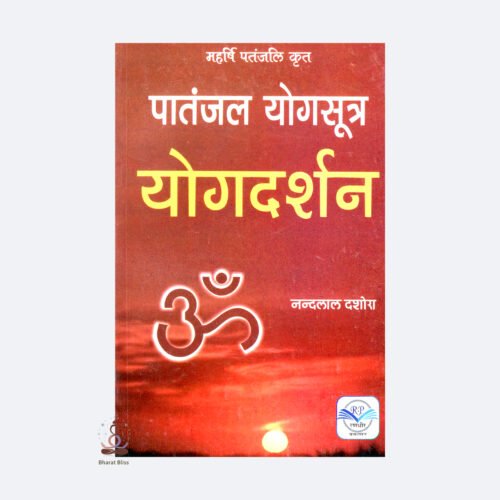-
Inspired Talks
₹100.00“Inspired Talks” is a powerful collection of motivational speeches, reflections, and life-changing ideas designed to awaken the spirit and uplift the soul. Each talk offers deep insights into personal growth, purpose, resilience, and the journey of self-discovery. Whether drawn from spiritual wisdom, real-life experiences, or visionary thinkers, these talks inspire listeners to lead meaningful, courageous, and compassionate lives. Perfect for anyone seeking motivation, clarity, or a spark of inspiration in their daily routine. -
Here is a description in English about Swami Holy Mother Sri Sarada Devi,Vivekananda, and the direct disciples of Sri Ramakrishna in connection with Madras (now Chennai):
Holy Mother, Swamiji, and the Direct Disciples at Madras
Madras (Chennai) played a significant role in the early spread of Sri Ramakrishna's teachings and the Ramakrishna Movement in South India. This city became a center of spiritual awakening through the visits and influence of Swami Vivekananda and other direct disciples of Sri Ramakrishna Paramahamsa.
Swami Vivekananda in Madras
Swami Vivekananda visited Madras in 1892, before his historic journey to the West. His presence in the city was transformative. He delivered several inspiring talks, which deeply influenced the educated youth and thinkers of the region. Madras was one of the key places where Swamiji received enthusiastic support and recognition. It was here that followers like Alasinga Perumal, a devoted disciple, helped raise funds for his trip to the Parliament of the World's Religions in Chicago (1893).
Swamiji stayed in Madras both before and after his trip to the West. After returning from America in 1897, he was given a grand reception in Madras, where he delivered many stirring lectures. These speeches emphasized Vedanta, national regeneration, and selfless service.
Holy Mother Sri Sarada Devi and Madras
Though Holy Mother Sri Sarada Devi never visited Madras physically, her spiritual influence was deeply felt by the devotees there. Her divine personality, simple life, and silent spiritual force inspired many in South India. Disciples and devotees in Madras maintained correspondence with her and received her blessings and guidance. Her portraits and teachings were spread by the monks of the Ramakrishna Order, helping people to understand her role as the spiritual consort of Sri Ramakrishna and the embodiment of the Divine Mother.
Direct Disciples and Their Visits to Madras
Many direct disciples of Sri Ramakrishna visited Madras to preach, inspire, and guide devotees. Among them:
-
Swami Ramakrishnananda (Shashi Maharaj), a direct disciple, was sent by Swami Vivekananda to Madras in 1897. He stayed for over a decade and was instrumental in founding the Ramakrishna Math in Madras (now in Mylapore). He dedicated his life to spreading Sri Ramakrishna’s message and establishing a strong monastic presence in South India.
-
Swami Sivananda (Mahapurush Maharaj) and Swami Abhedananda also visited Madras during their preaching tours, contributing to the spread of Vedanta and devotion to Sri Ramakrishna.
The Madras disciples, including Alasinga Perumal and others, remained closely connected with the movement and were key in the growth of the Ramakrishna Mission.
-
-
Hindu Gods And Goddesses
₹120.001. Brahma – The Creator
-
Appearance: Four heads (symbolizing the four Vedas), seated on a lotus or riding a swan.
-
Consort: Saraswati (goddess of knowledge).
2. Vishnu – The Preserver
-
Role: Protector of the universe, maintains cosmic order (dharma).
-
Appearance: Blue skin, four arms holding a conch, discus, lotus, and mace.
-
Avatars: Includes Rama, Krishna, Narasimha, Vamana, etc.
-
Consort: Lakshmi (goddess of wealth).
3. Shiva – The Destroyer and Transformer
-
Role: Destroys to create; represents change and regeneration.
-
Appearance: Trident, third eye, crescent moon, snakes, ash-covered body.
-
Forms: Nataraja (cosmic dancer), Ardhanarishvara (half-man, half-woman).
-
Consort: Parvati (goddess of love and fertility).
4. Lakshmi – Goddess of Wealth and Prosperity
-
Role: Brings wealth, fortune, and spiritual abundance.
-
Appearance: Beautiful, golden-hued, standing or sitting on a lotus.
-
Symbol: Gold coins flowing from her hands.
-
Vehicle: Owl.
5. Saraswati – Goddess of Knowledge and Arts
-
Role: Patron of learning, music, and wisdom.
-
Appearance: White sari, veena (musical instrument), books, swan or peacock.
-
Symbol: Purity and wisdom.
6. Parvati – Goddess of Power and Devotion
-
Forms: Durga (warrior), Kali (fierce destroyer of evil).
-
Consort: Shiva.
-
Children: Ganesha and Kartikeya.
7. Durga – Warrior Goddess
-
Appearance: Many arms holding weapons, rides a lion or tiger.
-
Victory: Known for slaying the demon Mahishasura.
8. Kali – Goddess of Time and Death
-
Role: Fierce form of Parvati; symbolizes destruction of evil and ego.
-
Appearance: Dark, wild hair, tongue out, garland of skulls.
-
Symbol: Transformation and liberation.
9. Ganesha – Remover of Obstacles
-
Role: God of beginnings, wisdom, and intellect.
-
Appearance: Elephant head, big belly, riding a mouse.
-
Popular: Worshipped before any major undertaking.
10. Hanuman – Monkey God and Devotee of Rama
-
Role: Symbol of devotion, strength, and loyalty.
-
Famous Deeds: Helped Rama in the Ramayana.
-
Appearance: Monkey-faced, carrying a mace and mountain.
11. Rama – Seventh Avatar of Vishnu
-
Role: Ideal king and human; hero of the Ramayana.
-
Companion: Sita (his wife), Lakshmana (his brother), and Hanuman.
-
Symbol: Dharma, truth, and virtue.
12. Krishna – Eighth Avatar of Vishnu
-
Role: Divine lover, guide in Bhagavad Gita, cowherd and king.
-
Forms: Child (Makhan Chor), lover (with Radha), and warrior-philosopher.
-
Symbol: Love, wisdom, and divine joy.
13. Skanda (Kartikeya/Murugan) – God of War
-
Appearance: Youthful, rides a peacock, carries a spear.
-
Popular In: South India as Murugan.
14. Surya – Sun God
-
Appearance: Rides a chariot pulled by seven horses.
-
Symbol: Time, energy, and health.
15. Agni – God of Fire
-
Role: Mediator between gods and humans (sacrifices).
-
Appearance: Two faces, riding a ram, flames from his body.
-
Chicago Addresses
₹40.00Swami Vivekananda's "Chicago Addresses" refer to a series of influential speeches he delivered at the Parliament of the World's Religions in Chicago in 1893. These speeches introduced Hindu philosophy to the Western world and emphasized universal tolerance and acceptanc
📚 Overview of the Chicago Addresses
Swami Vivekananda delivered six notable lectures during the Parliament:
-
Response to Welcome (September 11, 1893): Famous for the opening words "Sisters and Brothers of America," this speech highlighted the universality of religions and India's tradition of tolerance
-
Why We Disagree (September 13, 1893): Used the parable of the frog in the well to illustrate narrow-mindedness and the need for broader perspectives.
-
-
Religion Not the Crying Need of India (September 20, 1893): Criticized the focus on religion over addressing the immediate needs of the impoverished in India.
-
Buddhism: The Fulfillment of Hinduism (September 26, 1893): Discussed the relationship between Buddhism and Hinduism, portraying Buddhism as an extension of Hindu though
-
Address at the Final Session (September 27, 1893): Concluded with a call for religious harmony and mutual respect among different faiths.
📍 Places Associated with Swami Vivekananda in Chicago
Swami Vivekananda's time in Chicago is commemorated at several locations:
-
Dearborn Station (47 West Polk St.): The train station where Swami Vivekananda arrived in Chicago.
-
Hotel Richelieu (318 South Michigan Ave.): Venue for his lecture on Buddhism to the Ladies Fortnightly Club on October 27, 1893
-
Hull House (800 South Halsted St.): A settlement house where he spoke on the economic and social conditions in India between October and December 189
📖 A Text: The full text can be read on websites like The Hindu
-
-
Raja Yoga
₹100.00Raja Yoga is one of the four main paths of yoga, often called the "royal path" or the "king of yogas." It focuses on meditation and mental control as the means to spiritual liberation. The system of Raja Yoga was extensively described by Patanjali in the Yoga Sutras, where it is presented as an eightfold path known as the Ashtanga Yoga.
Meaning of Raja Yoga
-
"Raja" means king, and "yoga" means union or discipline.
-
Thus, Raja Yoga is the path of mastery over the mind, leading to union with the true Self or the divine.
Key Features of Raja Yoga
Raja Yoga emphasizes controlling the mind and senses through discipline, concentration, and meditation. It seeks to quiet the mental fluctuations (chitta vrittis) to realize the pure consciousness.
The Eight Limbs of Raja Yoga (Ashtanga Yoga)
-
Yama (Moral Restraints) – Ethical guidelines:
-
Ahimsa (non-violence)
-
Satya (truthfulness)
-
Asteya (non-stealing)
-
Brahmacharya (celibacy or moderation)
-
Aparigraha (non-possessiveness)
-
-
Niyama (Personal Disciplines) – Internal practices:
-
Santosha (contentment)
-
Tapas (discipline)
-
Svadhyaya (study of scriptures and self)
-
Ishvarapranidhana (surrender to God)
-
Asana (Posture) – Physical poses that prepare the body for meditation.
-
Pranayama (Breath Control) – Regulating the breath to control life force (prana).
-
Pratyahara (Withdrawal of the Senses) – Detaching the senses from external objects.
-
Dharana (Concentration) – Focusing the mind on a single object.
-
Dhyana (Meditation) – Uninterrupted flow of concentration.
-
Samadhi (Absorption) – A state of blissful union with the divine or pure consciousness.
Goal of Raja Yoga
The ultimate goal of Raja Yoga is Samadhi, where the practitioner experiences union with the Supreme Self (Purusha) and attains liberation (moksha) from the cycle of birth and death.
Who Can Practice Raja Yoga?
Anyone can practice Raja Yoga, regardless of religion or background. It is especially suited for those who are introspective and seek a deep understanding of the mind and consciousness.
-
-
वाटिका निधि श्री राधेश्याम बंका
वाटिका निधि - श्री राधेश्याम बंका
परिचय:
वाटिका निधि एक प्रतिष्ठित वित्तीय संस्था है जिसकी स्थापना समाज की आर्थिक प्रगति एवं समृद्धि के उद्देश्य से की गई है। इस संस्था के प्रमुख मार्गदर्शक एवं प्रेरणास्त्रोत श्री राधेश्याम बंका हैं, जो न केवल एक सफल उद्योगपति हैं, बल्कि एक समाजसेवी, धार्मिक विचारों वाले एवं दूरदृष्टि रखने वाले व्यक्तित्व भी हैं।
श्री राधेश्याम बंका का योगदान:
-
उन्होंने वाटिका समूह के माध्यम से अनेक क्षेत्रों में महत्वपूर्ण कार्य किए हैं, जिनमें रियल एस्टेट, वित्त, और सामाजिक सेवा प्रमुख हैं।
-
उनका उद्देश्य केवल व्यापारिक लाभ नहीं, बल्कि समाज को आत्मनिर्भर एवं समृद्ध बनाना भी रहा है।
-
उन्होंने सामाजिक उत्तरदायित्व (CSR) के अंतर्गत शिक्षा, स्वास्थ्य एवं महिला सशक्तिकरण जैसे क्षेत्रों में अनेक पहल की हैं।
वाटिका निधि के मुख्य उद्देश्य:
-
आम जनता को सुरक्षित एवं लाभदायक वित्तीय योजनाएँ उपलब्ध कराना।
-
छोटे निवेशकों के लिए विश्वसनीय एवं पारदर्शी निवेश के अवसर प्रदान करना।
-
सामाजिक एवं आर्थिक रूप से पिछड़े वर्गों को वित्तीय रूप से सशक्त बनाना।
विशेषताएँ:
-
पारदर्शिता और विश्वास पर आधारित संचालन
-
अनुभवी नेतृत्व एवं मजबूत प्रबंधन
-
ग्राहकों की संतुष्टि को सर्वोच्च प्राथमिकता
-
-
Pictorial Stories for Children2
-
Scene 1: Jungle Kingdom
– A lion declares himself king and starts troubling all animals.
(Image: Lion roaring, animals looking scared) -
Scene 2: The Plan
– Animals decide to send one animal a day to the lion as food.
(Image: Group of animals talking sadly) -
Scene 3: Enter the Clever Rabbit
– One day, a clever little rabbit is chosen. He decides to teach the lion a lesson.
(Image: A smart rabbit thinking) -
Scene 4: Rabbit Meets the Lion
– Rabbit arrives late. Lion gets angry. Rabbit tells lion another lion stopped him.
(Image: Angry lion; rabbit talking) -
Scene 5: Lion Looks for Rival
– Rabbit leads lion to a deep well, says the rival lion is inside.
(Image: Lion looking into a well) -
Scene 6: Lion Jumps into Well
– Lion sees his reflection, thinks it’s the enemy, and jumps in.
(Image: Lion jumping into water) -
Scene 7: Animals Celebrate
– The jungle is safe again. All animals cheer for the rabbit.
(Image: Happy animals with the rabbit
-
-
Swami Vivekananda Pictorial
₹100.00Swami Vivekananda Pictorial
-
Swami Vivekananda is typically depicted wearing a traditional Indian ochre or saffron robe (symbolic of renunciation).
-
He often wears a turban neatly wrapped around his head—usually in the same saffron or reddish-orange shade.
-
Sometimes, he is shown with a shawl draped over one shoulder or wrapped around the upper body.
2. Facial Features
-
He has a broad, intelligent forehead—symbolic of wisdom and thought.
-
His eyes are deep and intense, radiating calmness, confidence, and a strong spiritual aura.
-
His nose is sharp, and his lips are often portrayed in a neutral expression, suggesting composure and contemplation.
-
He may be shown with a clean-shaven face or a faint mustache in some portraits.
3. Body Posture
-
Swami Vivekananda is usually shown standing or sitting upright with a dignified posture.
-
In some illustrations, he is seated in padmasana (lotus posture), meditating or engaged in thoughtful reflection.
-
In formal portraits, he stands with arms folded, symbolizing strength and self-assurance.
4. Expression and Aura
-
His expression combines serenity, strength, and vision—reflecting his spiritual depth and leadership.
-
Many illustrations surround him with a subtle halo or glow, signifying enlightenment or spiritual greatness.
5. Background (Optional in Artworks)
-
He is sometimes shown with books, temples, or the Indian flag, highlighting his contributions to philosophy, education, and patriotism.
-
In images of his famous 1893 Chicago speech, he may be seen in Western attire (long coat and turban) standing at a podium.
-
-
Sri Ramakrishna Paramahamsa, a 19th-century Indian mystic and saint, often used parables and stories to convey deep spiritual truths in simple, relatable ways. Here are some of his famous stories, explained briefly in English by description:
1. The Parable of the Elephant and the Mahout
Theme: Understanding true humility and discrimination
A man was told that God dwells in all beings. One day, an elephant came charging down the road. The mahout (elephant driver) shouted, "Get out of the way!" But the man thought, “God is in the elephant too. Why should I move?” He didn’t move, and the elephant threw him aside.
Moral: God is indeed in all beings, but that doesn’t mean you ignore practical wisdom. The voice of the mahout was also God’s voice. We must use discrimination (viveka).
2. The Parable of the Salt Doll
Theme: Oneness with the Divine
A salt doll wanted to measure the depth of the ocean. It went into the water and melted away, becoming one with the ocean.
Moral: Like the salt doll, when a soul seeks to know the infinite Divine, it loses its individual ego and becomes one with God. Self and God become one.
3. The Story of the Chameleon
Theme: Different paths, one Truth
Several people went into a forest and saw a chameleon. One said it was red, another said green, another said blue. They argued until a man who lived near the tree said, “You are all right. The chameleon changes color.”
Moral: God appears in different forms to different people. Hindus, Muslims, Christians – all see different aspects of the same Divine Truth.
4. The Farmer and the Flood
Theme: Surrender to God
A farmer’s fields were flooded. He tried all night to save the crops but failed. Finally, exhausted, he said, “Lord, I leave it all to you.” Then he felt peace and slept.
Moral: Surrendering to God after doing your best brings peace. Anxiety comes from ego; peace comes from faith.
5. The Poison and the Antidote
Theme: The importance of devotion
Sri Ramakrishna said: Just as a small drop of the antidote can counteract the poison, even a little genuine devotion to God can destroy a life of sin and ego.
These parables are not just tales but spiritual teachings in symbolic form, used by Ramakrishna to help people understand God, devotion, ego, discrimination, and the oneness of all religions.
Would you like more stories or one of these in greater detail?
-
"श्री राधा चरितामृत" एक भक्तिमय ग्रंथ है जो राधा रानी की लीलाओं, गुणों और महिमा का सुंदर वर्णन करता है। यह ग्रंथ विशेष रूप से गौड़ीय वैष्णव परंपरा में अत्यंत पूजनीय है और श्रीमद्भागवत, राधा रस सुद्ध निधि, राधा रसायन, आदि रसिक ग्रंथों की भांति इसका स्थान भी विशेष माना जाता है।
श्री राधा चरितामृत
लेखक: रसराज रसिक संत (कुछ संस्करणों में श्री हित हरिवंश महाप्रभु या रसिक संतों को माना जाता है)
भाषा: ब्रजभाषा या संस्कृत (कुछ संस्करण हिंदी में भी अनुवादित हैं)
विषय: श्री राधा रानी का जीवन, लीलाएँ, सौंदर्य, प्रेम, और कृष्ण के साथ उनका दिव्य प्रेम संबंध।
मुख्य विषय-वस्तु:
-
श्री राधा का प्राकट्य (जन्म कथा):
वृंदावन की पावन भूमि पर श्री राधा रानी के अवतरण की कथा, जो श्री वृषभानु जी के घर में हुआ। यह भाग भक्तों के हृदय को प्रेमरस में डुबो देता है। -
बाल लीलाएँ:
श्री राधा रानी की बाल्यकाल की मधुर लीलाओं का वर्णन — जैसे रसोई की लीला, सखियों के साथ क्रीड़ा, आदि। -
रास लीला और प्रेम लीला:
श्रीकृष्ण और श्री राधा रानी के दिव्य मिलन और रास लीला का वर्णन, जिसमें राधा रानी की अधिष्ठात्री रूप में महिमा प्रकट होती है। -
उद्धव संवाद एवं राधा की महिमा:
उद्धव जी के वृंदावन आगमन पर गोपियों विशेषतः श्री राधा का अद्वितीय प्रेम और तत्त्वज्ञान। -
राधा रानी का स्वरूप वर्णन:
उनके रूप, गुण, भाव, माधुर्य और वात्सल्य का अत्यंत सुंदर वर्णन।
शैली और भाषा:
-
अत्यंत भावपूर्ण और रसयुक्त भाषा।
-
कई छंदों में ब्रज भाषा का प्रयोग, जो स्वयं ही प्रेम को जाग्रत करता है।
-
-
परिचय:
योग दर्शन भारतीय दर्शन की एक प्रमुख शाखा है, जिसे महर्षि पतंजलि ने सूत्रों के रूप में संकलित किया। यह दर्शन व्यक्ति के आत्म-साक्षात्कार एवं मोक्ष की प्राप्ति के लिए शरीर, मन और आत्मा के बीच संतुलन स्थापित करने पर बल देता है। योग दर्शन मुख्यतः "पतंजलि योग सूत्र" के माध्यम से जाना जाता है, जिसमें कुल 195 सूत्र हैं।
योग दर्शन की विशेषताएं:
-
अष्टांग योग (Ashtanga Yoga):
पतंजलि ने योग को आठ अंगों में विभाजित किया है, जिसे अष्टांग योग कहा जाता है:-
यम (नियम): अहिंसा, सत्य, अस्तेय, ब्रह्मचर्य, अपरिग्रह
-
नियम (अनुशासन): शौच, संतोष, तप, स्वाध्याय, ईश्वरप्रणिधान
-
आसन: शरीर को स्थिर व स्वस्थ रखने की प्रक्रिया
-
प्राणायाम: श्वास-प्रश्वास को नियंत्रित करने की विधि
-
प्रत्याहार: इन्द्रियों को विषयों से हटाना
-
धारण: मन को एक स्थान पर केंद्रित करना
-
ध्यान: निरंतर ध्यान की अवस्था
-
समाधि: आत्मा और परमात्मा का मिलन
-
-
दर्शन शास्त्र का हिस्सा:
योग दर्शन सांख्य दर्शन के सिद्धांतों को आधार बनाता है लेकिन उसमें ईश्वर की सत्ता को स्वीकार करता है, जो इसे एक विशिष्ट स्थान प्रदान करता है। -
प्रायोगिक दर्शन:
योग केवल सैद्धांतिक नहीं बल्कि व्यावहारिक भी है। यह जीवन के हर पहलू को शुद्ध और संतुलित करने की प्रक्रिया है। -
उद्देश्य:
योग दर्शन का मुख्य उद्देश्य चित्त की वृत्तियों का निरोध करना है –
"योगश्चित्तवृत्तिनिरोधः" – पतंजलि योग सूत्र 1.2
अर्थात् मन की चंचलताओं को रोकना ही योग है।
योग दर्शन का महत्व:
-
मानसिक शांति और स्थिरता प्रदान करता है।
-
आत्मा की शुद्धि और मोक्ष की प्राप्ति में सहायक है।
-
जीवन में अनुशासन और संयम लाता है।
-
-
श्री हित हरिवंश चरितामृत का विवरण
नाम: श्री हित हरिवंश चरितामृत
लेखक: यह ग्रंथ श्री हित हरिवंश महाप्रभु के अनुयायियों या शिष्यों द्वारा उनकी लीलाओं और शिक्षाओं के आधार पर लिखा गया है।
भाषा: ब्रज भाषा और संस्कृत मिश्रित हिंदी
संप्रदाय: राधावल्लभ संप्रदाय
मुख्य विषय: राधा-कृष्ण की भक्ति, श्री वृंदावन धाम की महिमा, श्री हरिवंश जी की लीलाएं और उपदेश
मुख्य विषय-वस्तु:
-
श्री हित हरिवंश महाप्रभु का जीवन परिचय:
-
जन्म, बाल्यकाल, विवाह और वृंदावन गमन।
-
श्री राधावल्लभ लाल की सेवा स्थापना।
-
-
भक्ति मार्ग का प्रवर्तन:
-
रागानुगा भक्ति की महिमा।
-
लीलाओं का वर्णन:
-
साधकों को राधा रति की ओर प्रेरित करना।
-
उपदेश और संवाद:
-
साधना के तरीके, सेवा भावना और ब्रह्म प्रेम का निरूपण।
-
-
श्री राधावल्लभ मंदिर की स्थापना:
-
श्री वृंदावन धाम में राधा-कृष्ण की मूर्ति की स्थापना और सेवा-विधि।
-
महत्व:
-
यह ग्रंथ भक्तों के लिए एक आध्यात्मिक मार्गदर्शक है।
-
इसमें राधा-कृष्ण की माधुर्य भक्ति का सुंदर निरूपण किया गया है।
-
श्री हित हरिवंश जी को श्री राधा का अवतार माना जाता है, इसलिए उनका चरित भक्ति साधना में बहुत प्रभावी और पूजनीय माना जाता है।
-
-
Swami Vivekananda Pictorial
-
Swami Vivekananda is typically depicted wearing a traditional Indian ochre or saffron robe (symbolic of renunciation).
-
He often wears a turban neatly wrapped around his head—usually in the same saffron or reddish-orange shade.
-
Sometimes, he is shown with a shawl draped over one shoulder or wrapped around the upper body.
2. Facial Features
-
He has a broad, intelligent forehead—symbolic of wisdom and thought.
-
His eyes are deep and intense, radiating calmness, confidence, and a strong spiritual aura.
-
His nose is sharp, and his lips are often portrayed in a neutral expression, suggesting composure and contemplation.
-
He may be shown with a clean-shaven face or a faint mustache in some portraits.
3. Body Posture
-
Swami Vivekananda is usually shown standing or sitting upright with a dignified posture.
-
In some illustrations, he is seated in padmasana (lotus posture), meditating or engaged in thoughtful reflection.
-
In formal portraits, he stands with arms folded, symbolizing strength and self-assurance.
4. Expression and Aura
-
His expression combines serenity, strength, and vision—reflecting his spiritual depth and leadership.
-
Many illustrations surround him with a subtle halo or glow, signifying enlightenment or spiritual greatness.
5. Background (Optional in Artworks)
-
He is sometimes shown with books, temples, or the Indian flag, highlighting his contributions to philosophy, education, and patriotism.
-
In images of his famous 1893 Chicago speech, he may be seen in Western attire (long coat and turban) standing at a podium.
-













